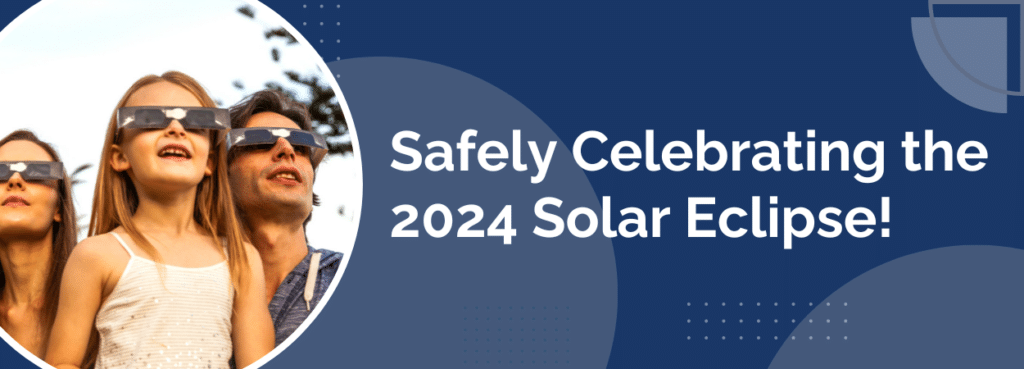
On April 8th, the skies of North Texas will witness this mesmerizing celestial event – the 2024 Solar Eclipse. As your trusted partners in eye health, we’re excited to provide answers to common questions to ensure your vision remains protected.
Top 3 Safe Viewing Practices:
- Utilize Certified Eclipse Glasses or Handheld Solar Viewers: Before and after totality, rely on certified eclipse glasses or handheld solar viewers to observe the partial phases of the eclipse safely. These specialized devices filter out harmful rays, allowing you to experience the event without risking your vision.
- Direct Viewing During Totality: During the brief period of totality, when the moon completely obscures the sun, it is safe to view the eclipse directly without eye protection. However, ensure that the sun’s bright face is entirely covered before looking directly at it. Once any part of the sun reappears, promptly resume using eclipse glasses or a solar viewer.
- Find a recommended Vendor for Solar Eclipse Glasses:
We recommend purchasing eclipse glasses and viewers from reputable vendors endorsed by the American Academy of Ophthalmology. These preferred vendors adhere to strict safety standards, ensuring your eye protection. Visit AAO Preferred Vendors for a list of trusted suppliers. Approved Vendors: Suppliers of Safe Solar Viewers & Filters | Solar Eclipse Across America (aas.org)
Top 10 questions Answered:
By following these safe viewing practices and heeding the advice provided, you can enjoy the eclipse’s beauty without compromising your vision. Remember, at Sweeney Eye Associates, your eye health is our top priority. Enjoy the eclipse responsibly and may your viewing experience be both memorable and safe!





